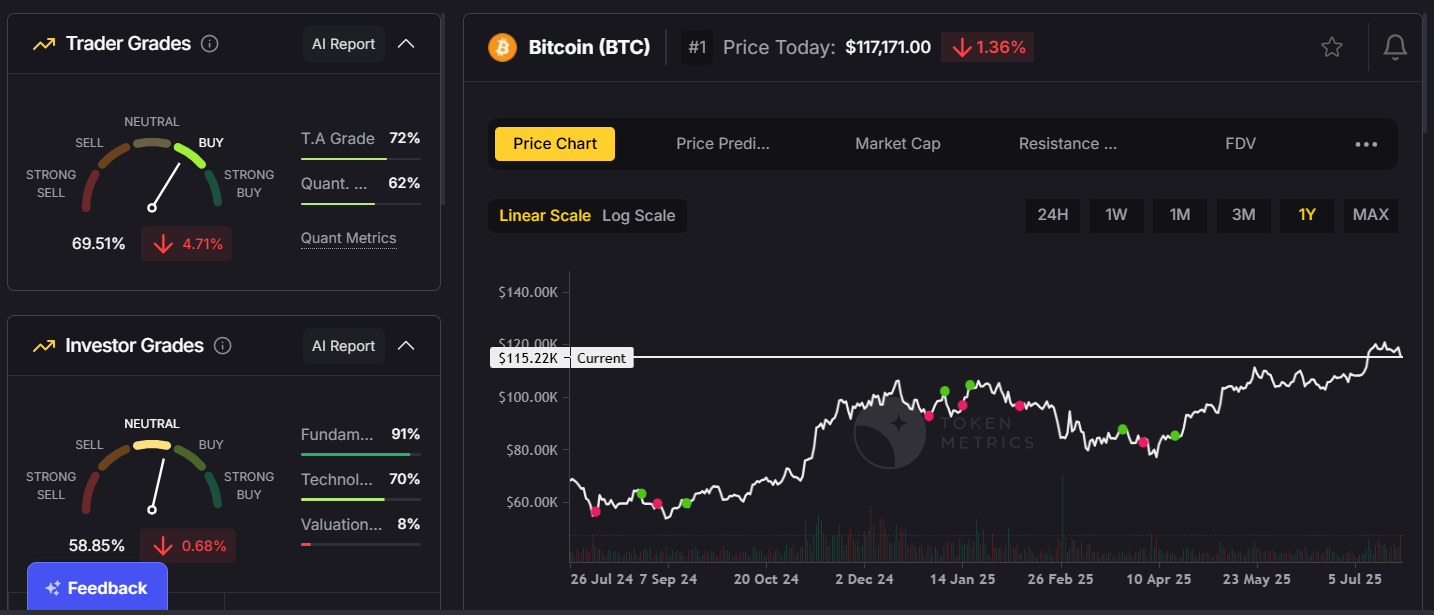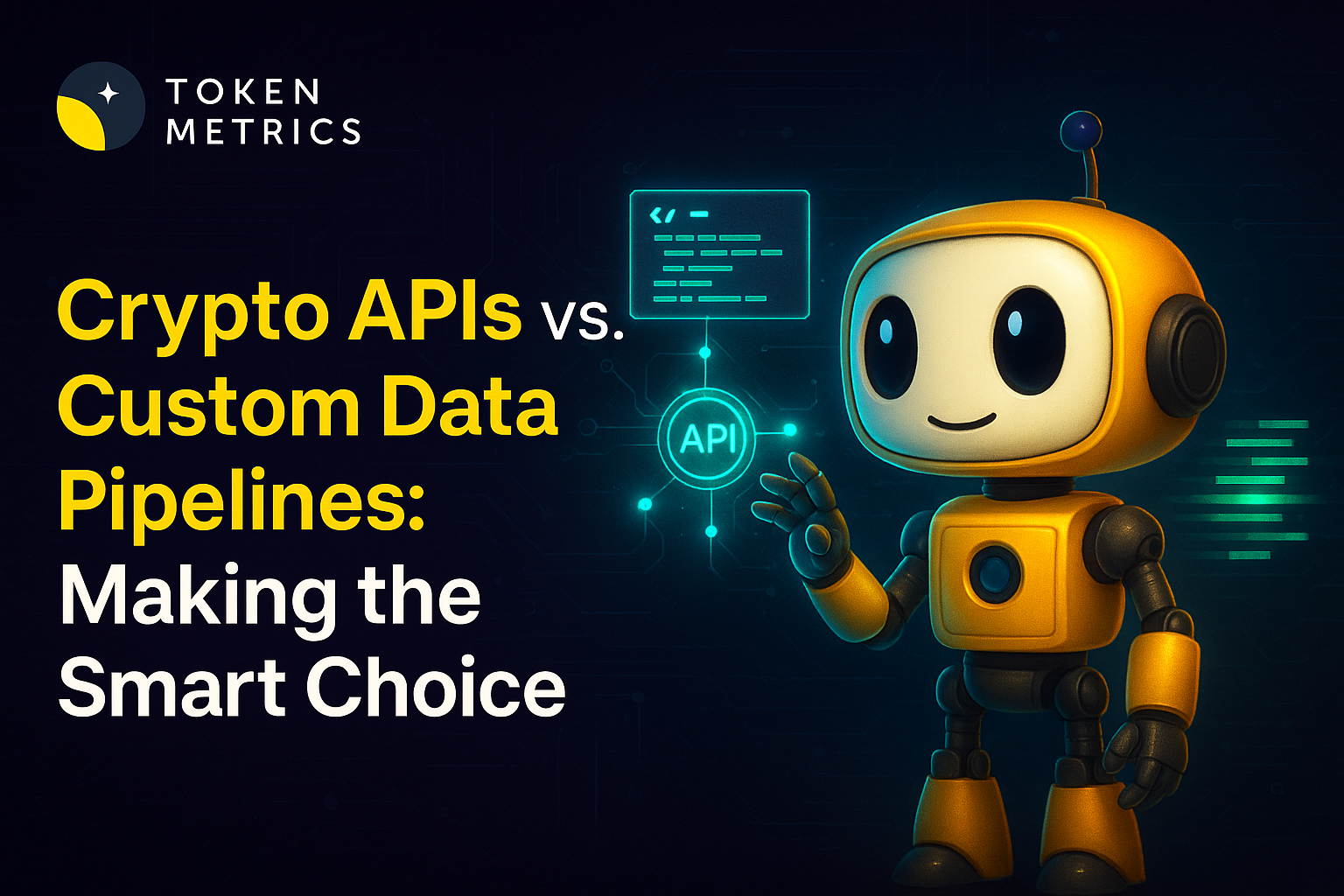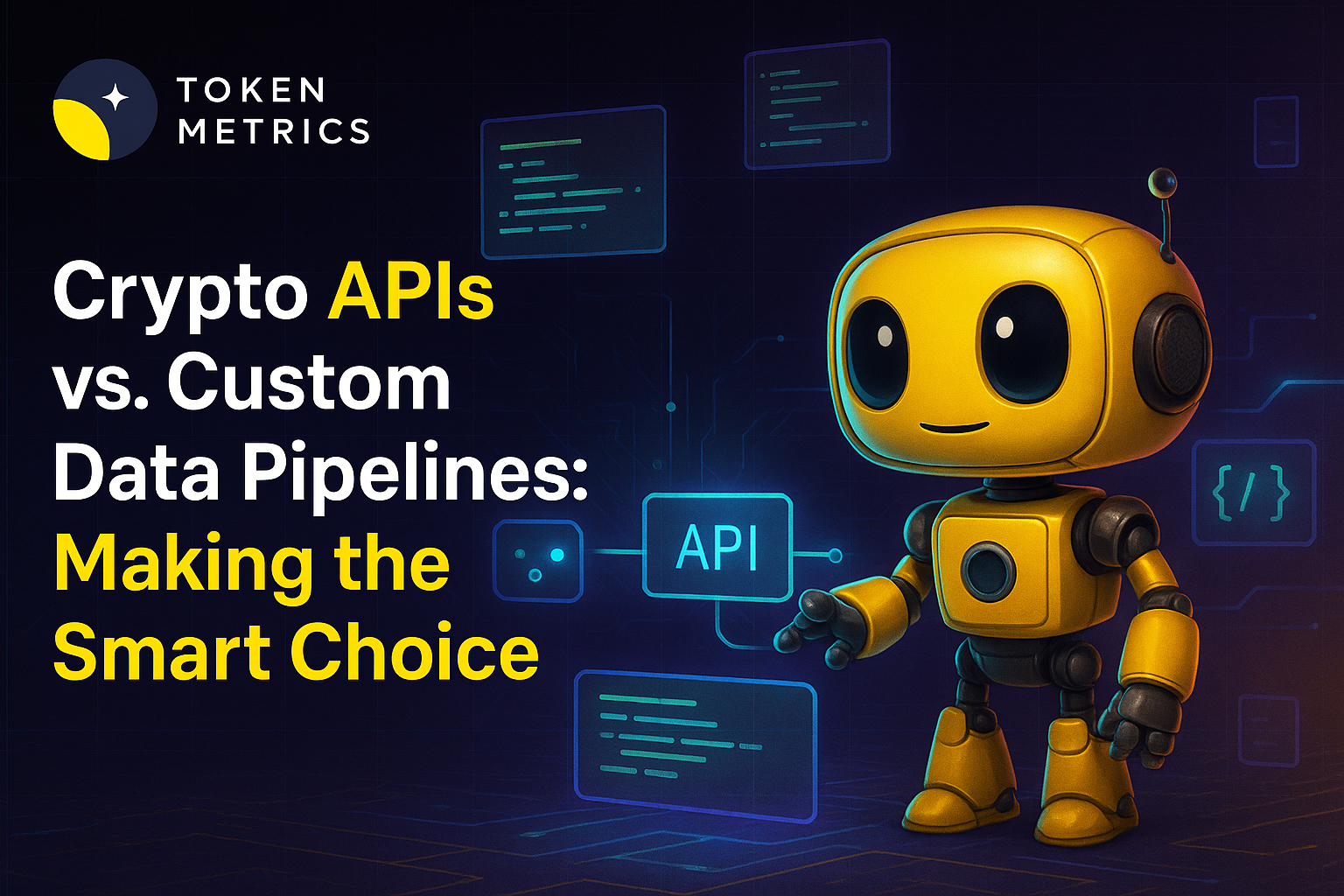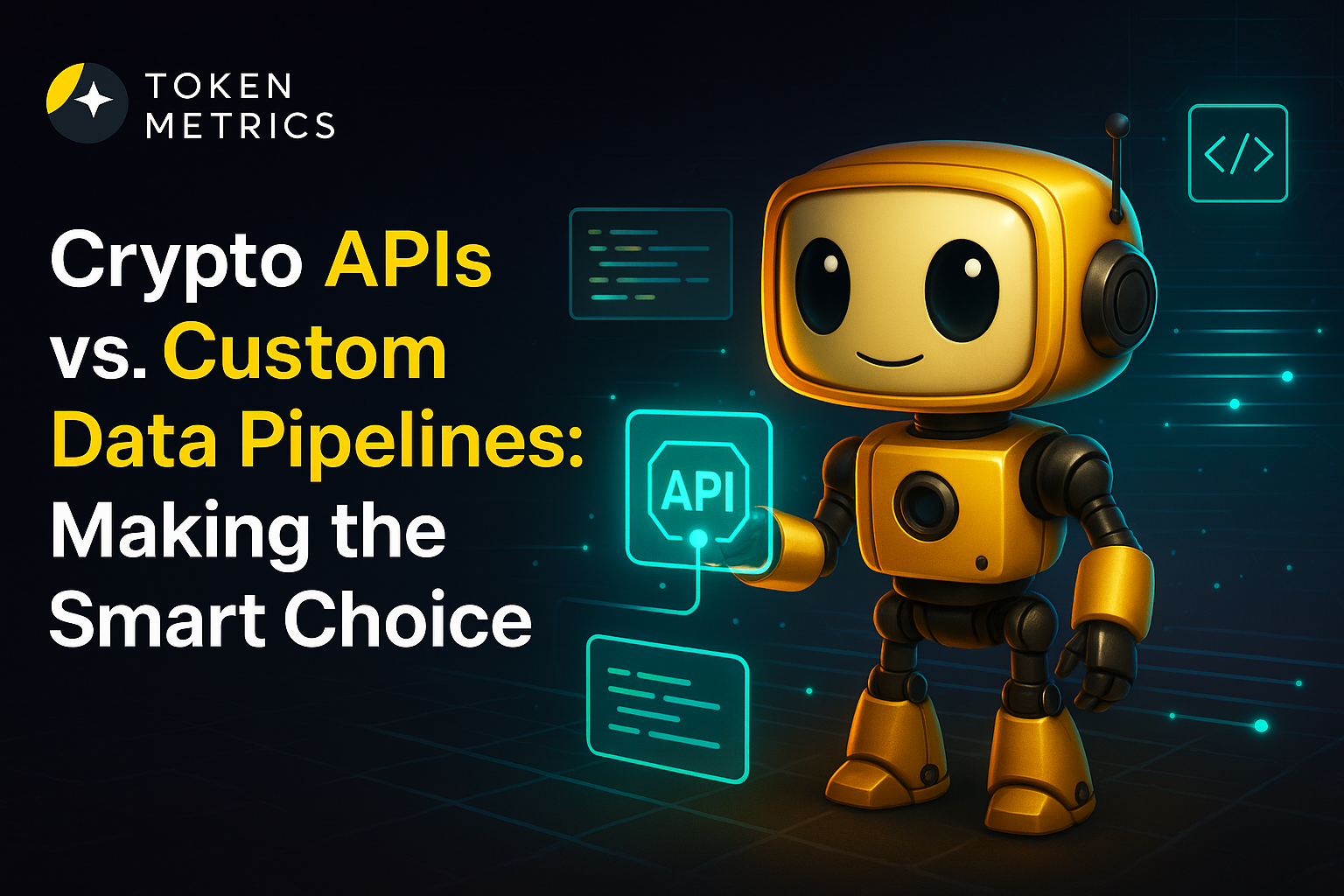
What Is Ether? A Complete Guide to Ethereum’s Native Token in 2025
_%20A%20Complete%20Guide%20to%20Ethereum%E2%80%99s%20Native%20Token%20in%202025.png)
Introduction: Understanding Ether (ETH)
Ether (ETH) is the native cryptocurrency of the Ethereum blockchain, powering one of the most influential ecosystems in the crypto world. Since its launch in 2015, Ethereum has evolved from a simple smart contract platform into a global hub for decentralized finance (DeFi), NFTs, real‑world asset tokenization (RWA), and blockchain‑based applications.
In 2025, Ether remains a cornerstone of crypto portfolios, offering not only investment potential but also utility within Ethereum’s constantly expanding network. This article breaks down what Ether is, how it works, why it’s valuable, and how platforms like Token Metrics help investors analyze ETH effectively.
What Is Ether?
Ether (ETH) is the cryptocurrency used to pay for transactions, smart contract execution, and services on the Ethereum network. While Bitcoin is often referred to as “digital gold,” Ether functions as both a digital asset and a fuel (commonly called “gas”) for running decentralized applications (dApps).

Key roles of Ether:
- Transaction Fees (Gas): Users pay ETH to interact with the blockchain.
- Smart Contract Execution: Developers use ETH to deploy and run decentralized applications.
- Staking & Security: ETH powers Ethereum’s Proof of Stake (PoS) consensus, rewarding validators who secure the network.
- Store of Value: Like Bitcoin, ETH is also held as a long‑term investment by institutions and retail investors.
How Ethereum Works
Ethereum is a decentralized, programmable blockchain that allows developers to create and deploy dApps. It introduced smart contracts—self‑executing agreements that operate without intermediaries.
In 2022, Ethereum completed The Merge, transitioning from Proof of Work (PoW) to Proof of Stake (PoS). This shift reduced energy consumption by over 99% and enabled ETH holders to stake their tokens to earn passive rewards.
Why Ether Matters in 2025
Ether remains one of the most versatile and valuable cryptocurrencies in the market:
- DeFi Dominance:
Ethereum powers most decentralized finance protocols, with billions of dollars locked in apps for lending, borrowing, and yield farming. - NFT Ecosystem:
Ethereum remains the leading blockchain for non‑fungible tokens (NFTs), supporting major marketplaces and artists. - Enterprise Adoption:
Businesses use Ethereum for tokenizing real‑world assets, executing private smart contracts, and building blockchain‑based supply chains. - Investment Potential:
ETH continues to be a top‑performing asset, appealing to long‑term HODLers and institutional investors.
The Role of Ether in DeFi
In 2025, Ethereum continues to dominate the decentralized finance (DeFi) space. DeFi protocols like Uniswap, Aave, and MakerDAO run on Ethereum, using Ether as collateral or for gas fees.
Why this matters for investors:
- ETH demand grows as DeFi expands.
- Holding ETH grants access to liquidity pools, lending platforms, and yield farming opportunities.
How to Buy and Store Ether
1. Buying ETH:
Ether is available on major crypto exchanges such as Coinbase, Binance, and decentralized platforms like Uniswap.
2. Storing ETH:
Use:
- Hot Wallets: Convenient for frequent transactions (e.g., MetaMask).
- Cold Wallets: Hardware wallets like Ledger or Trezor for secure long‑term storage.
3. Staking ETH:
Stake ETH directly through Ethereum validators or staking platforms to earn rewards while supporting the network.
Ether vs. Bitcoin
While Bitcoin and Ether are both top cryptocurrencies, they serve different purposes:

- Bitcoin: Primarily a store of value and payment network.
- Ether: A multi‑purpose token for smart contracts, dApps, and staking.
In 2025, ETH has positioned itself as a growth‑driven crypto asset, while Bitcoin remains the ultimate store of value.
Price Outlook and Market Potential
With Ethereum’s upgrades and institutional adoption, many analysts expect ETH to outperform in the coming cycle. Key growth drivers include:
- Layer 2 Scaling Solutions: Projects like Polygon (MATIC) reduce gas fees and improve transaction speed.
- Real‑World Asset Tokenization: Expanding Ethereum’s use in traditional finance.
- AI‑Driven Analytics: Platforms like Token Metrics help investors identify optimal entry and exit points for ETH.
Using Token Metrics for ETH Analysis
Token Metrics offers AI‑powered tools that make investing in ETH smarter:
- AI‑Generated Ratings: Evaluating ETH based on over 80 data points.
- On‑Chain Analytics: Tracking active wallets, staking trends, and developer activity.
- Portfolio Optimization: Helping investors balance ETH exposure with other assets.
- Market Timing Alerts: AI‑driven signals for buying or taking profits at the right time.
This gives ETH investors a competitive edge in volatile markets.
Risks of Investing in Ether
While ETH has strong fundamentals, risks remain:
- Network Congestion: Despite Layer 2 solutions, high demand can still lead to expensive gas fees.
- Regulatory Uncertainty: Ongoing debates about whether ETH could be classified as a security.
- Competition: Emerging smart contract platforms like Solana and Avalanche challenge Ethereum’s dominance.
Using Token Metrics helps mitigate these risks by providing real‑time analytics and portfolio insights.
Practical Tips for ETH Investors
- Stake Your ETH: Earn passive income while contributing to network security.
- Diversify Holdings: Balance ETH with other high‑potential altcoins and stablecoins.
- Monitor Upgrades: Follow Ethereum roadmap updates (e.g., sharding, scalability improvements).
- Use Analytics Tools: Leverage Token Metrics to stay ahead of market trends.
Conclusion
Ether is more than just another cryptocurrency—it’s the lifeblood of the Ethereum ecosystem, powering decentralized applications, DeFi, NFTs, and enterprise solutions.
In 2025, holding ETH offers exposure to one of the most innovative and widely used blockchain platforms, making it a must‑have for serious crypto investors.
By combining long‑term holding strategies with AI‑powered insights from Token Metrics, investors can confidently navigate Ethereum’s growth trajectory and maximize returns in the years ahead.

.svg)

Create Your Free Token Metrics Account

.png)




%201.svg)
%201.svg)


%201.svg)









.svg)




.png)